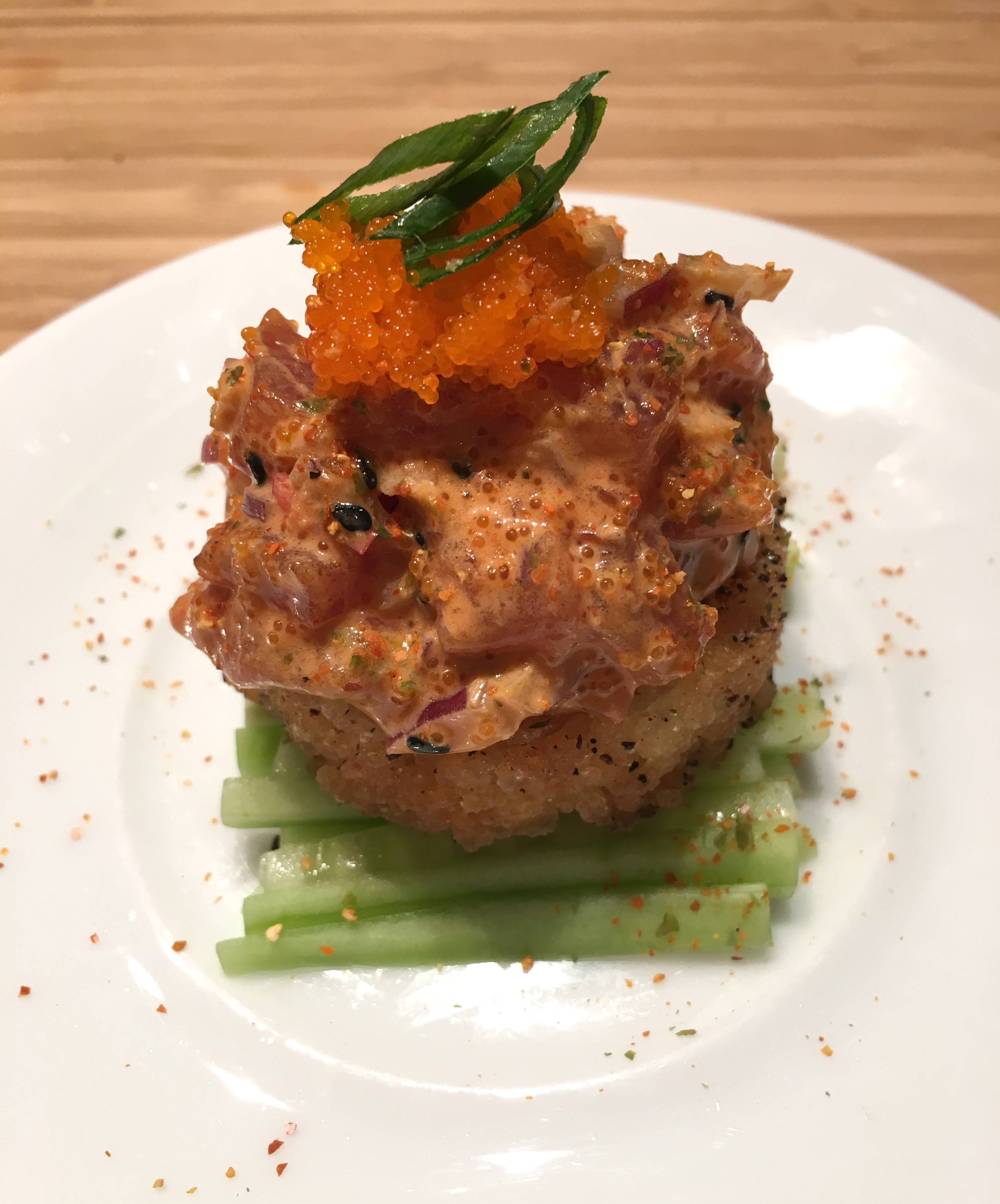
by zan@zeliciousrecipes.com | Appetizers, Fish

I love being in the kitchen with my son! He is able to identify missing ingredients, textures and even color in a dish. We made this Spicy Tuna Poke together, taking inspiration from several recipes on the internet, and made our own alterations in order to improve taste and texture, customizing it to our (his) liking. 😉
Tuna Poke Ingredients:
- ½ lb diced ahi or maguro
- 3 tb minced red or sweet onion
- 2 tb tobiko (flying fish roe) plus more for use as a topping
- ⅓ cup mayo (Hellmans or Best Foods)
- 1 tb sugar or honey (for paleo)
- 2 tb shoyu
- 3 tb Sriracha (or more to taste)
- 1 diced red chili-pepper (optional)
- 1 tb sesame oil
- 2 stalks scallions minced – green parts only
- 1 large pealed and julienned cucumber
Directions for tuna:
– Combine mayo, sugar shoyu, and Sriracha
– Gently mix together tuna, onions, chillies and green onions
– Add mayo mixture and tobiko, mix gently
– Add sesame oil, taste an adjust flavoring
As you can tell, I had some fun with my food and plated on a bed of finely diced cucumber. I used a Spam musubi mold to get the shape.
Sushi rice cakes
- 1 cup cooked sushi rice
- 1 cup organic canola oil
Use round or square mold to create 1-½” thick layer of rice. Place oil in small sauce pan heat on high. Place molded cooked rice, into oil with a slotted spoon. Cook approximately 2 minutes, then turn over to cook other side. Should be a little browned on both sides, and crunchy. Place cucumber on a plate, add the crunchy rice patty and add the Spicy Tuna Poke. Top with 1 tsp of tobiko. Add a few slices of green onion and Voilá. Some other options are to add some diced avocado and cucumber into the tuna mixture. Be sure to mix gently as you do not want to squish the avocados. 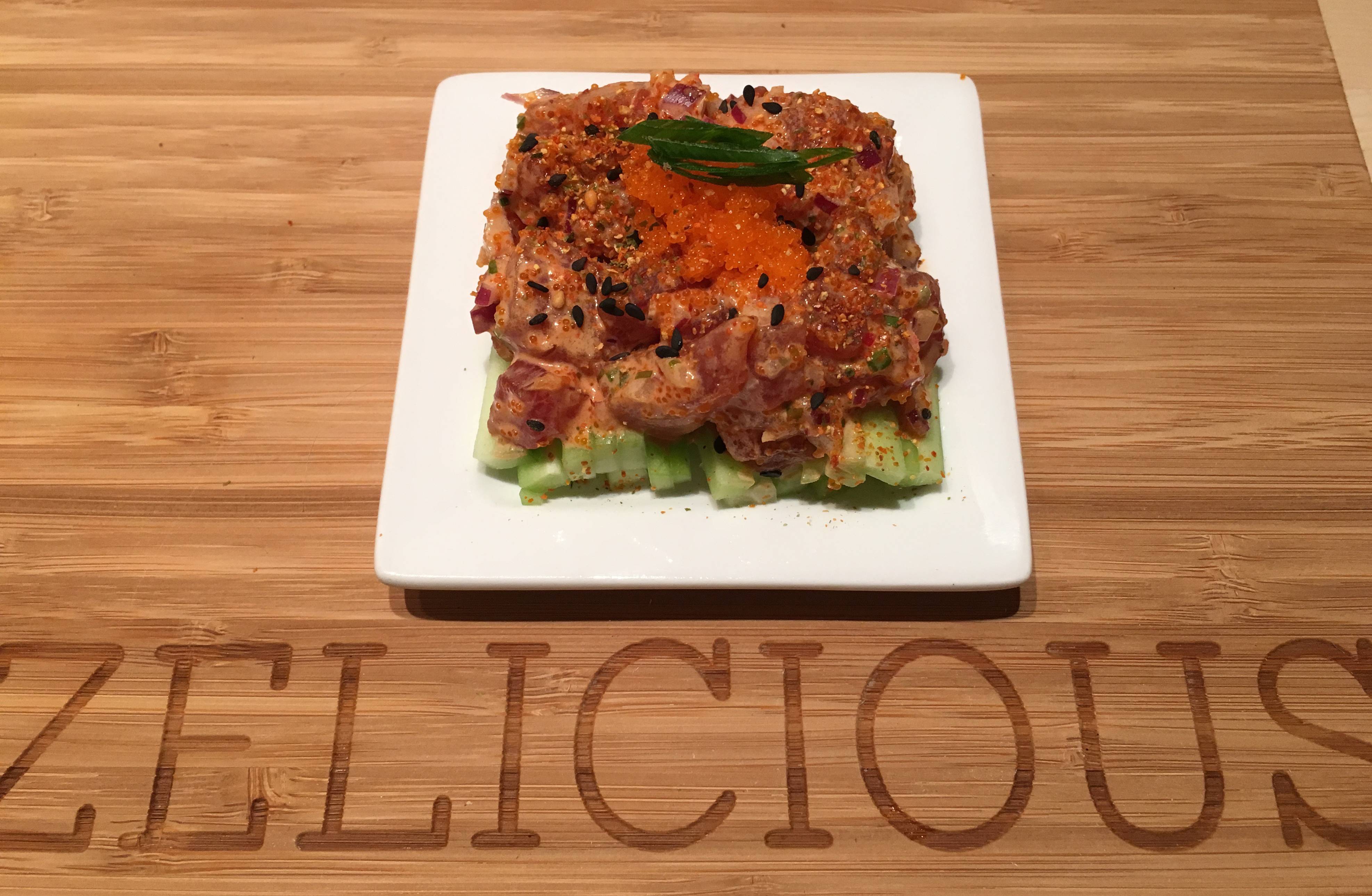
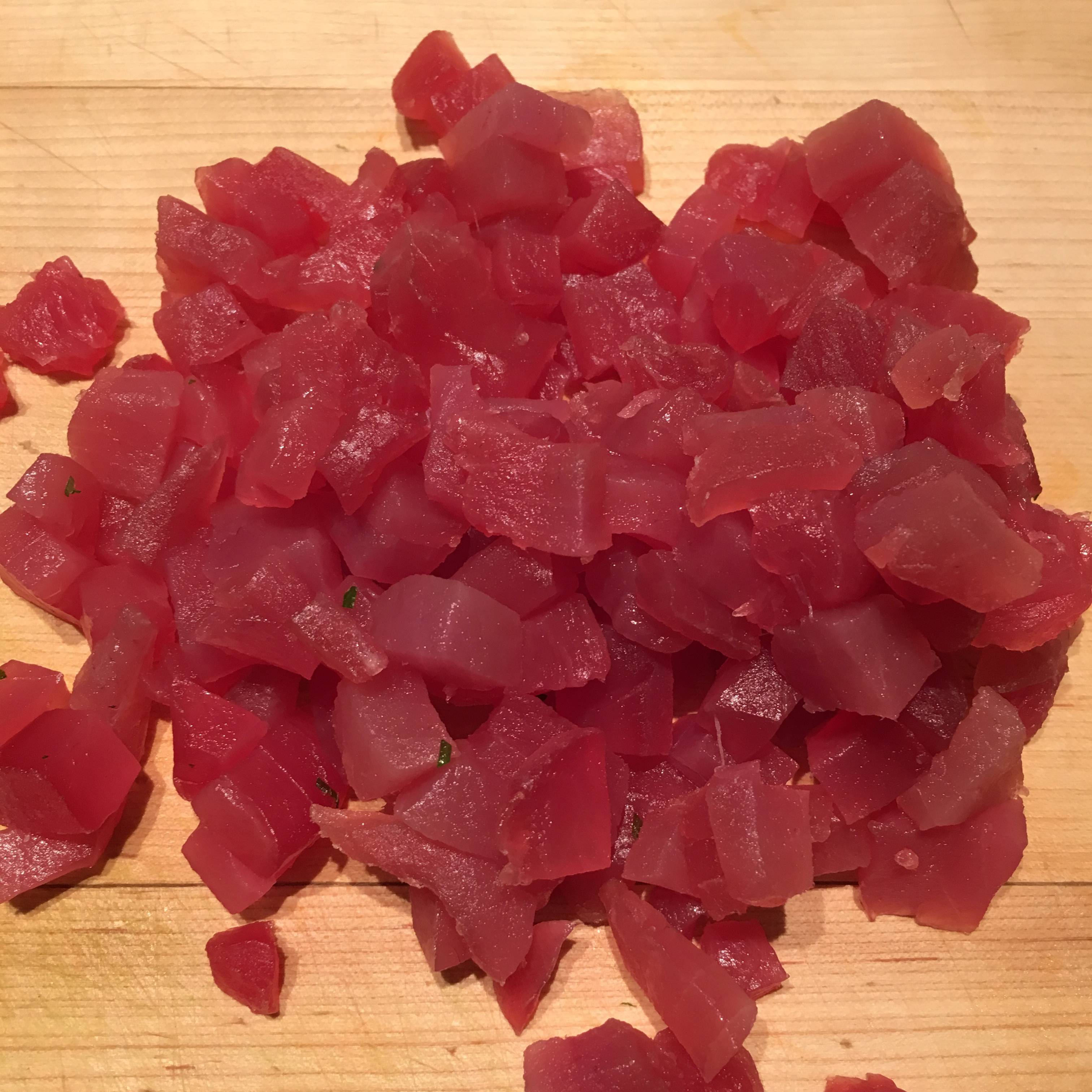
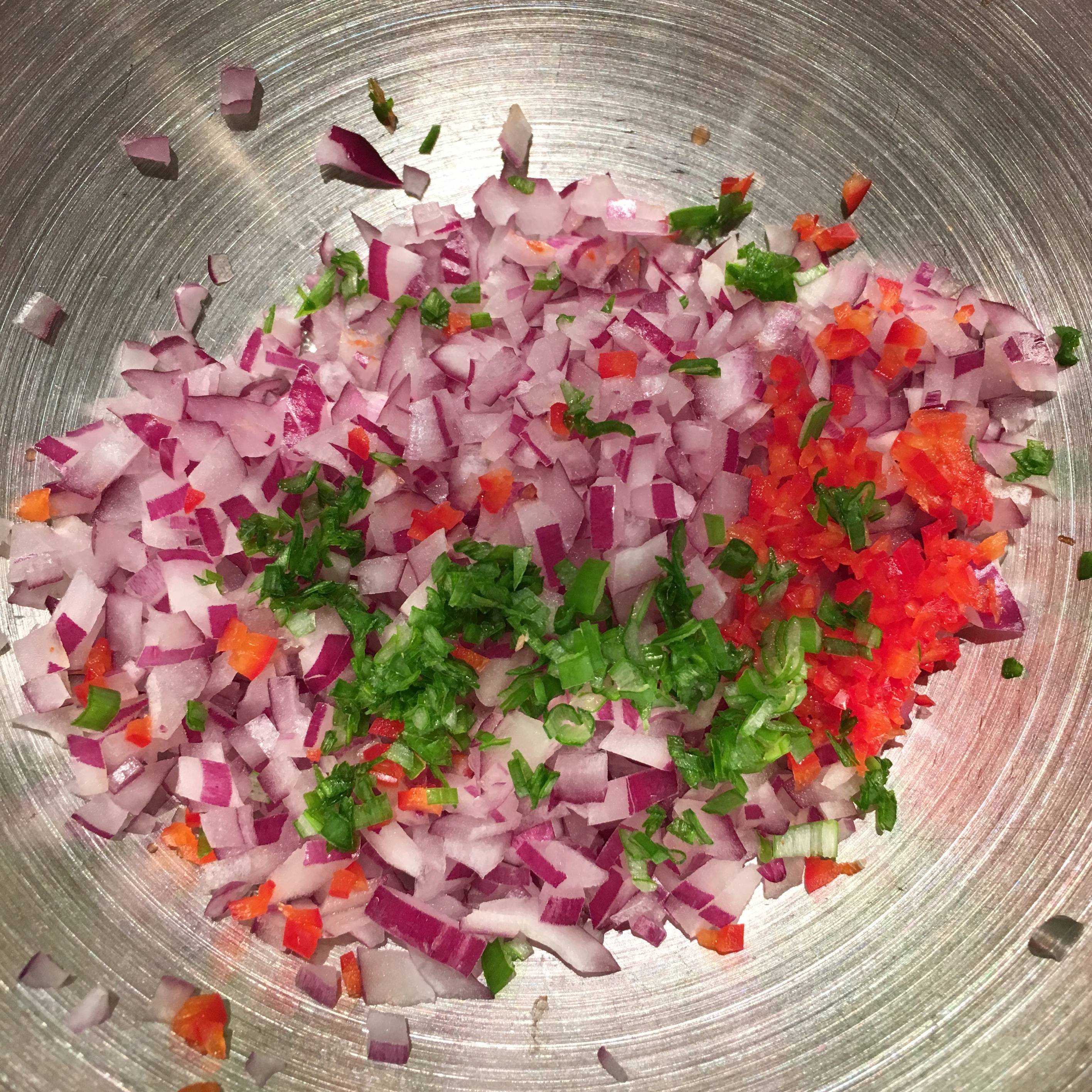
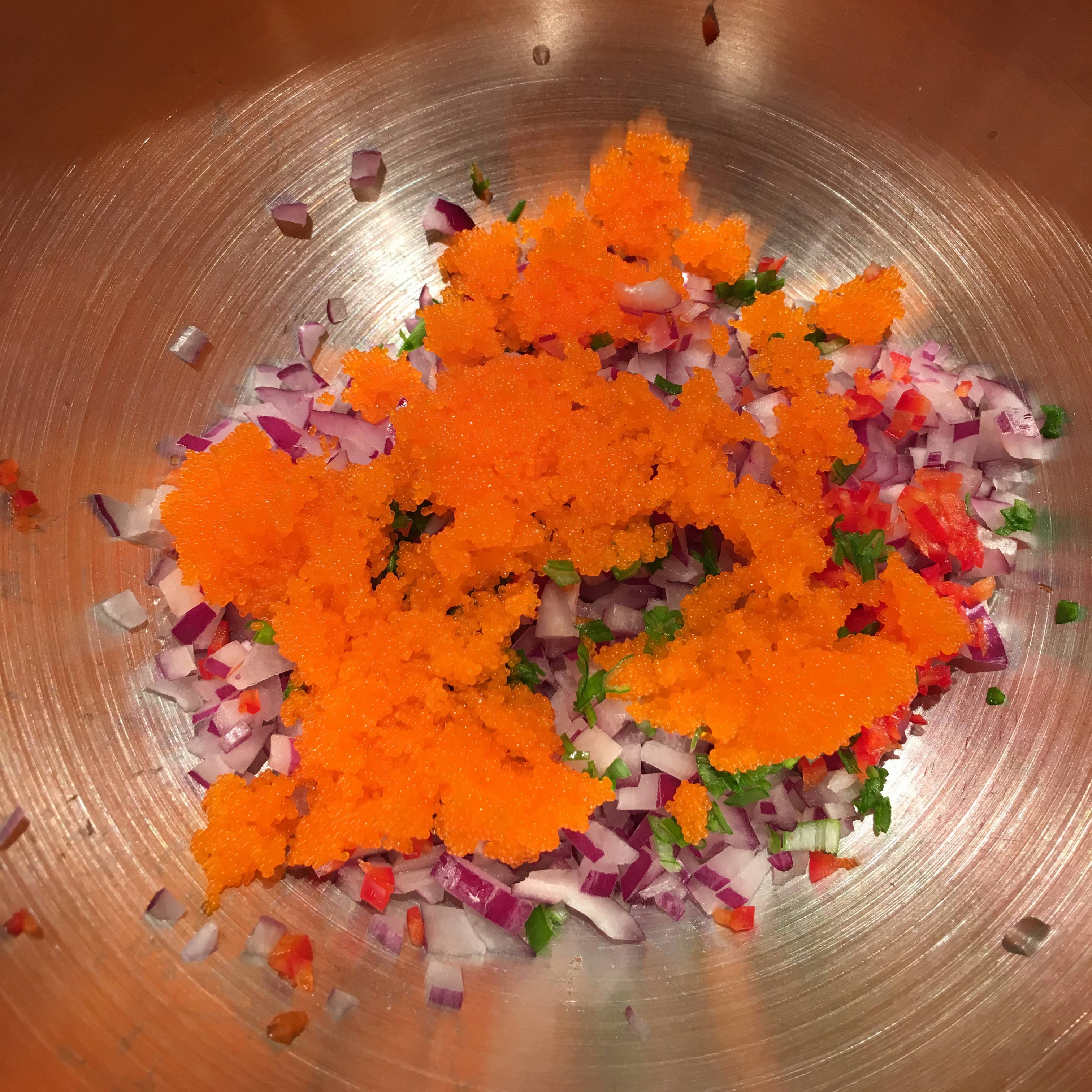
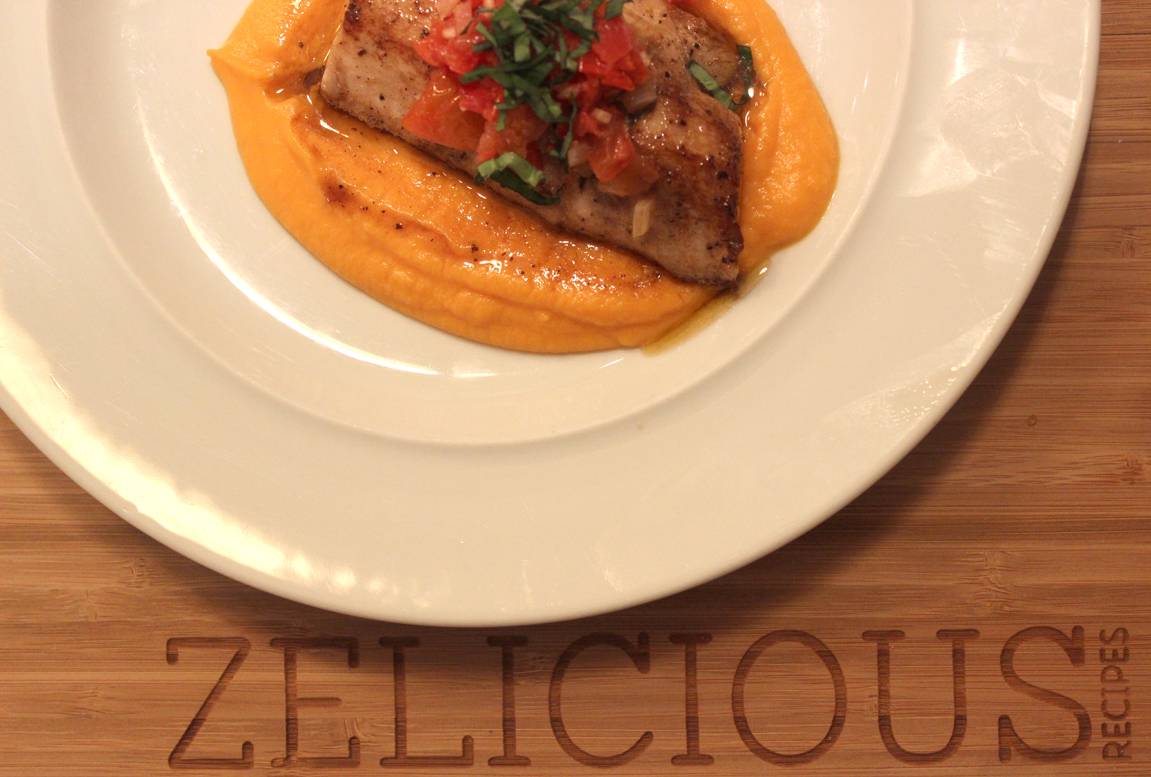
by zan@zeliciousrecipes.com | Fish, Vegetables

Here is another Cobia recipe I created using Open Blue’s sustainable fish. The family loved it!
What is Cobia? Cobia is a mild flavored white fish, and a great sustainable substitute for salmon or sea bass. It has also been called black kingfish. There is more info on this fish on my previous post (click here). If you want to buy Cobia you can find it at this website: http://www.chefsfreshfish.com/Cobia-Fillet-p/e725a.htm
Ingredients for Sweet Potatoe Puree
- 2 large sweet potatoes peeled
- 1 cup of chicken broth (I recommend organic bone broth for a little extra protein)
- ¼ tsp of grated nutmeg
- ½ cup créme fraîche
- ½ tsp of salt
Ingredients for tomato “bruschetta”
- 3 tbsp of olive oil (EVOO)
- ½ cup of shallots (diced)
- 4 garlic cloves (minced)
- 3 plum tomatoes (deseeded and finely chopped)
- ½ lemon zest (finely grated)
- pinch of salt
- 4 basil leaves (thinly sliced)
Ingredients for Cobia fish
- 4 (4-6 oz) pieces of Cobia filets (Open Blue’s)
- 1 lemon
- salt and pepper
- 1 tbsp of organic butter
Directions for Sweet Potato Puree:
Cut sweet potatoes into 1 inch cubes. Steam for 10-15 minutes until soft. Place into food processor and puree, slowly adding in the chicken broth. Add in the nutmeg and salt. Puree until smooth. Add in the creme fraîche and puree briefly until you have reached a smooth creamy consistency.
Directions for Tomato bruschetta:
In a small sauce pan on low heat, add in the oil, shallots, garlic, tomatoes, and lemon zest. Salt to taste. Cook for 15 – 20 minutes on low heat, until tomatoes have softened and garlic and onions are clear.
Directions for Cobia Fish Fillets:
Pat the Cobia Fillets dry, squeeze lemon and add the salt and pepper. Can be done 30 minutes prior to cooking. In an iron skillet on medium-high heat, melt butter and sear the fish filets on both sides, making sure it is cooked all the way through and opaque.
Plating:
Place several spoonfuls of the sweet potato puree on each plate. Add the fish to the center and drizzle with the tomato bruschetta. Top with basil for decoration.
This also goes great with a side of kale salad.
Enjoy!
Serves 4
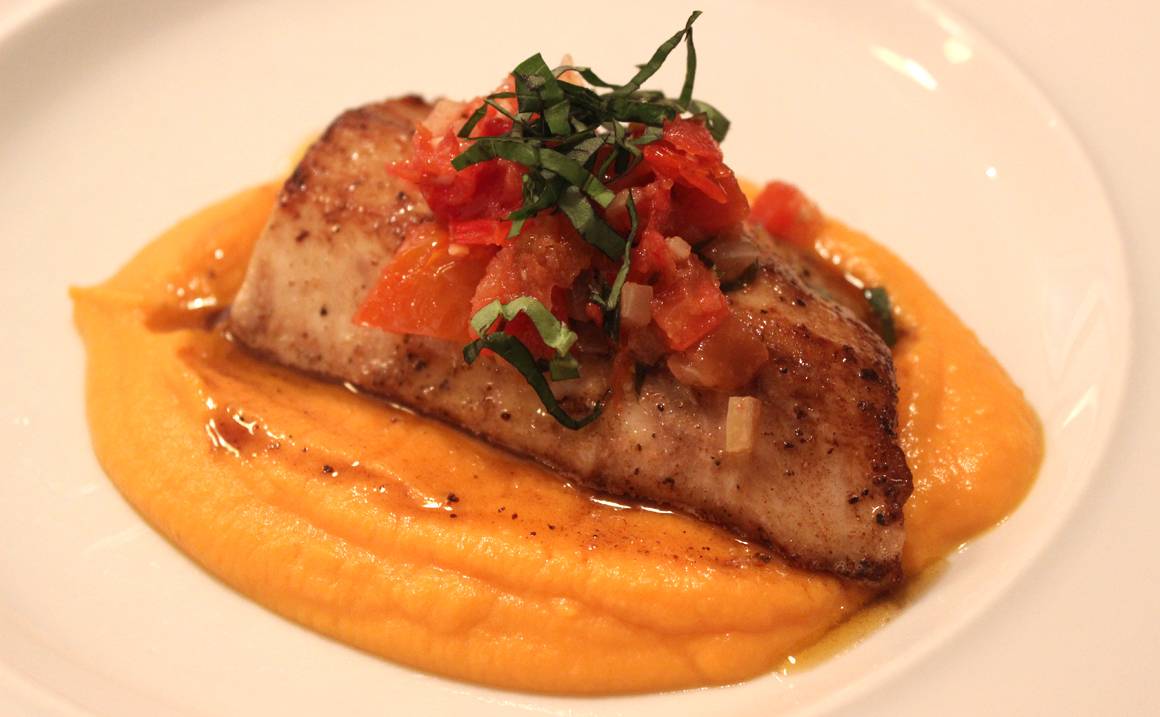
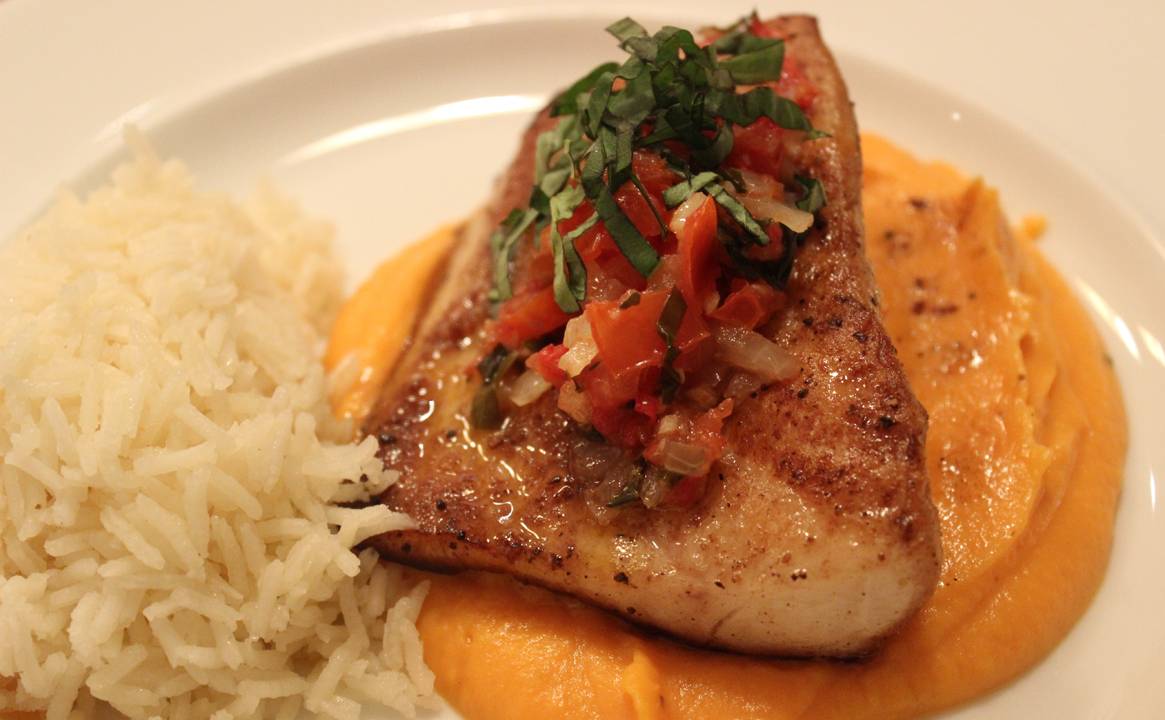
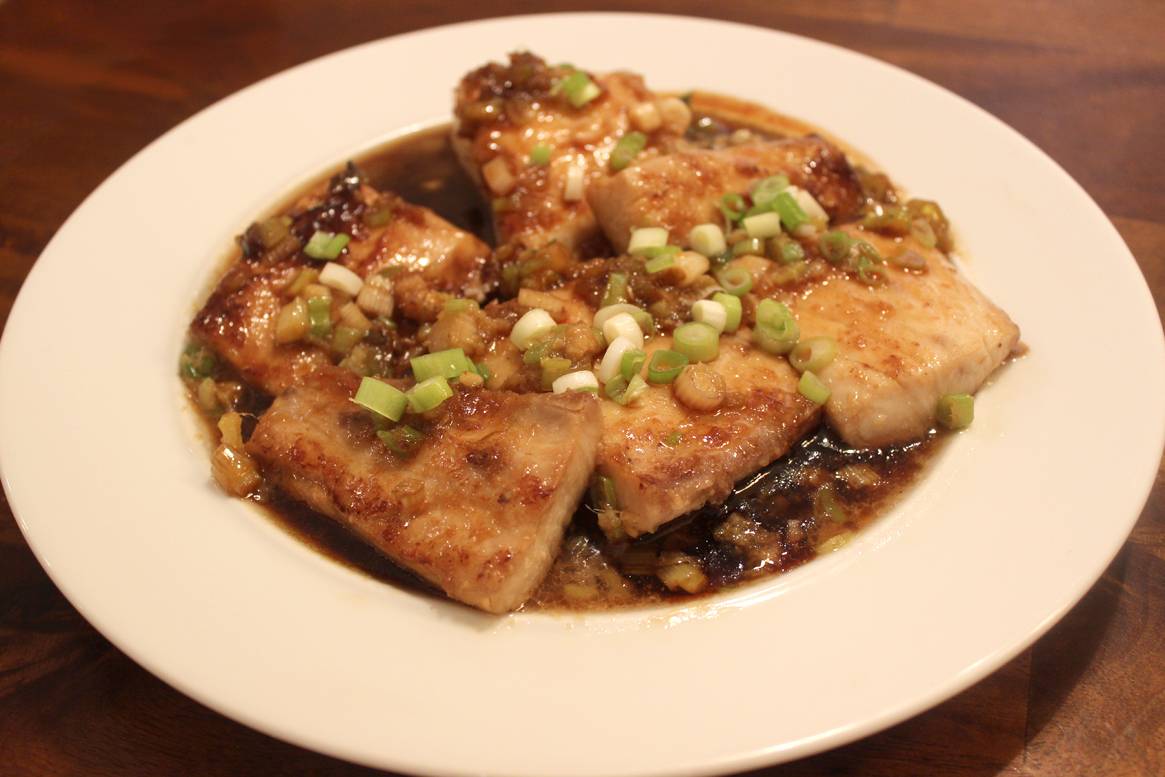
by zan@zeliciousrecipes.com | Fish

What is Cobia you ask? Cobia is a mild flavored white fish, and a great sustainable substitute for salmon or sea bass. It has also been called black kingfish. Open Blue’s Cobia fish are carefully raised in deep pristine waters and is always sourced from the open ocean. Open Blue Cobia is pure, healthy and safe – free of contaminants, hormones, colorants and pesticides. They raise their fish in a stress free, low density and high-energy environment. This results in healthier fish that is naturally high in protein and very rich in Omega 3 (DHA & EPA), with levels almost 2X as high as farmed Atlantic salmon. There is a great story about Open Blue and their founder Brian O’Hanlon, by Daniel Stone of National Geographic (click here to read more).
Open Blue Cobia is a truly versatile fish that offers a world of culinary possibilities. I have had some amazing Cobia dishes created by one of our favorite restaurants in Boulder, Centro Latin Kitchen on Pearl street. If you want to buy Cobia you can find it at this website: http://www.chefsfreshfish.com/Cobia-Fillet-p/e725a.htm
I will be posting my own recipes for Cobia, starting with this one:
Soy Marinated Cobia
For the Fish:
- 1 ½ pound of Cobia cut into 6 even pieces
- 1/2 cup chopped green onions
- 3 tablespoons minced peeled fresh ginger
- 3 tablespoons Chinese rice wine or dry Sherry, divided
- 2 tablespoons peanut oil or vegetable oil, divided
- 1 tablespoon soy sauce
For the Sauce:
- 3 tablespoons sugar
- 2 tablespoons soy sauce
- 2 tablespoons Asian sesame oil
- 2 tablespoons Chinese rice wine or dry Sherry
- 1/4 cup chopped green onions
PREPARATION
For fish:
Rinse fish and pat dry. Mix green onions, ginger, 1 tablespoon rice wine, 1 tablespoon oil, and soy sauce in 11x7x2-inch glass baking dish. Add fish and turn to coat. Let marinate 1 hour at room temperature (but no longer as you will loose the taste of the fish).
For sauce:
Bring first 6 ingredients to boil in heavy small saucepan, stirring to dissolve sugar. Reduce heat to medium and simmer until sauce is slightly thickened and reduced to 1/3 cup, about 6 minutes.
Remove fish from marinade and place on several layers of paper towels to drain; reserve marinade. Pat fish dry. Heat remaining 1 tablespoon oil in a iron skillet, then fish pieces, spreading evenly. Cover and cook 30 seconds. Uncover and loosen fish pieces with metal spatula. Reduce heat to medium and cook 1 minute. Turn fish pieces over; cook 1 minute. Add remaining 2 tablespoons rice wine and reserved marinade from fish. Cover and cook 1 minute. Remove skillet from heat; let fish stand covered until just opaque in center, about 1 minute. Using metal spatula, transfer fish and sauce from skillet to plate. Spoon sauce over fish; sprinkle with green onions.
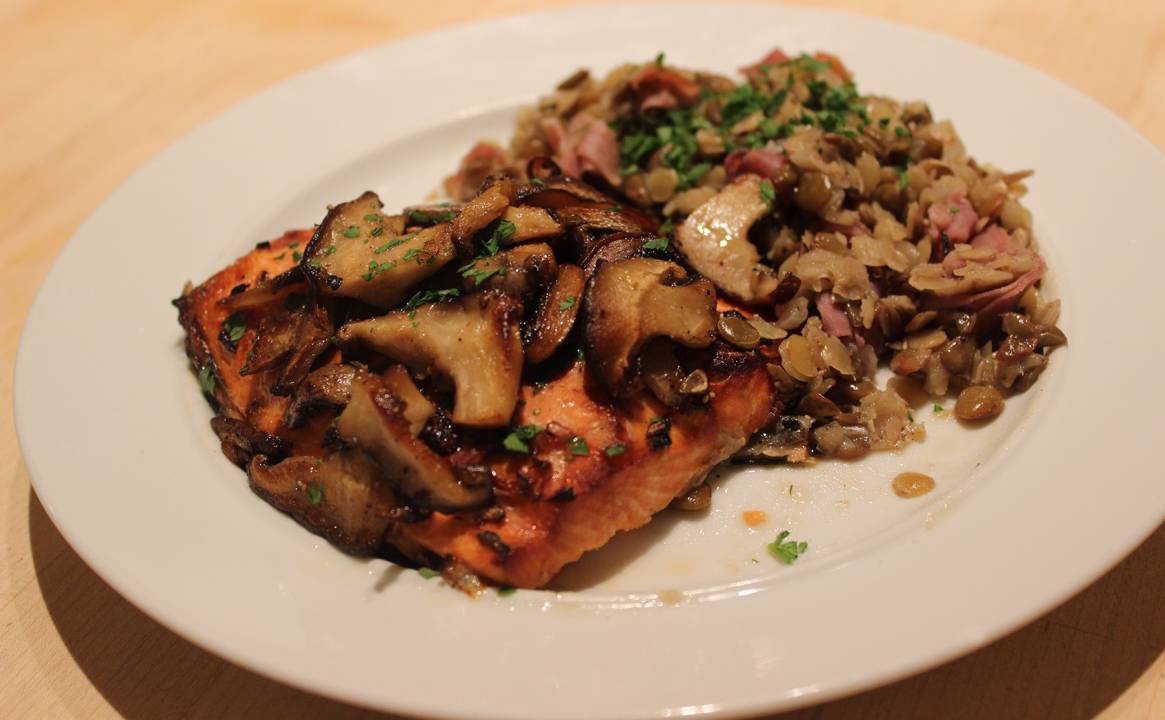
by zan@zeliciousrecipes.com | Fish, Vegetables

My family loves salmon, not only because of the taste, but the health benefits as well. It’s packed with Omega-3 fatty acids and is an excellent source of high-quality protein, vitamins and minerals (including potassium, selenium and vitamin B12). I like to try different recipes with salmon so that my family doesn’t get sick of it. Here is a recipe I found, but made some modifications to it.
Ingredients:
For the Salmon:
- 4 6-ounce pieces of salmon, skin and bones removed
- 4 teaspoons of soy sauce
- ½ cup minced red onion
- 1 lemon, quartered
For the Mushrooms:
- 2 tbsp salted butter
- 4 cups wild mushrooms (creminis, chanterelles, or oysters)
- 1 tbsp chopped rosemary
- 5 cloves of chopped garlic
- salt and freshly ground pepper
For the Lentils:
- 2 tsp extra-virgin olive oil
- ½ cup chopped yellow onion
- 2 cups of chicken broth (bone broth is even better – more protein)
- ⅓ cup julienned prosciutto
- 2 tbsp chopped flat-leaf parsley
- salt and freshly ground pepper
Directions:
For the Lentils: Place the olive oil in a medium sauce-pan and warm over medium heat. Add the onions to the pan and cook until onions are translucent (approx. 3-4 minutes). Add the chicken stock and lentils to the pan, boil then reduce heat to a simmer. cook for 20 to 40 minutes (depends on the type of lentils being used – best to follow the package instructions). Once cooked to desired consistency (I prefer a little al dente), remove from heat, fold in the prosciutto and chopped parsley. Season with salt and pepper.
For the Mushrooms: trim the end of the stems from the mushroom and slice into ¼ inch slices. Bake the mushrooms covered in oven at 350 degrees for 30 minutes. Then, Place 1 tbsp. butter in a large sauce pan, on medium heat and add the garlic and rosemary. Cook until garlic is cooked through. With a slotted spoon, remove the garlic and rosemary, leaving any butter in the pan. Add the other tbsp and mushrooms to the pan, and cook. I prefer my mushrooms a little browned. Cook for 5 minutes or until they reached desired consistency. Remove mushrooms and season with salt and pepper.
For the Salmon: Rub the salmon with the soy sauce, place under broiler for 3-4 minutes. In an even coat, add the onions and return to broiler, make sure not to burn the onions, or over cook the salmon. (I cooked my for 7 minutes on the 3rd shelf down from the top, so it did not burn). Remove Salmon and squeeze lemon over it.
Assembly: In the center of each plate, spoon some cooked lentils, place salmon on top, and spoon on the mushrooms. Sprinkle with parsley.
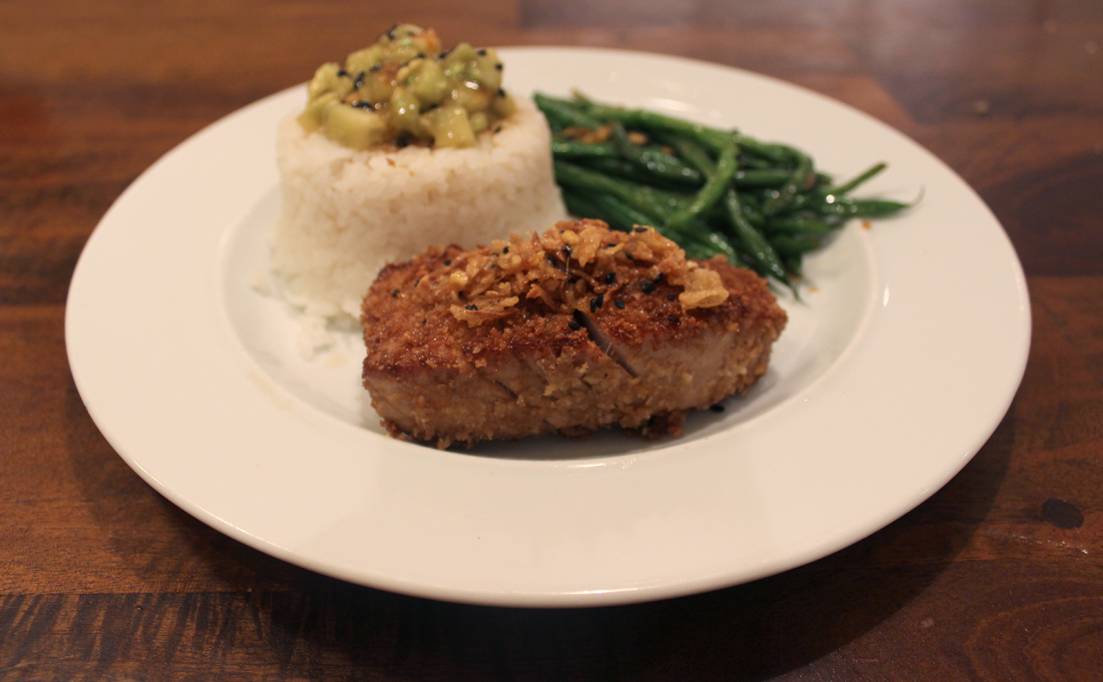
by zan@zeliciousrecipes.com | Fish

I like to have tuna only once every couple of weeks, as it can contain high amounts of mercury, which can’t be good for anyone! But I truly love the texture, flavor and consistency of tuna, especially with a nice crispy exterior. I marinated the tuna in a bit of Ponzu Sauce for about an hour, then dredged them in Panko bread crumbs. There are two varieties of panko: white panko, which is made from white bread without any crust, and tan panko, which is made from the entire loaf. The bread is processed into large flakes, rather than crumbs, and then dried. Panko has a light, airy, and delicate texture that helps it crisp as it cooks. You can press the tuna steaks into the breadcrumbs, covering all sides, then briefly sear in a pan of sesame and canola oil until the Panko browns. Quickly sear each side, but make sure not to cook through if you are a fan of medium to rare tuna like me. You can serve this with crunchy fried battered onions. I also drizzled some of my sauce from my asian slaw on top of the fish to add a little flavor. In this dish I served it with Sushi Rice and sautéed french green beans and garlic.
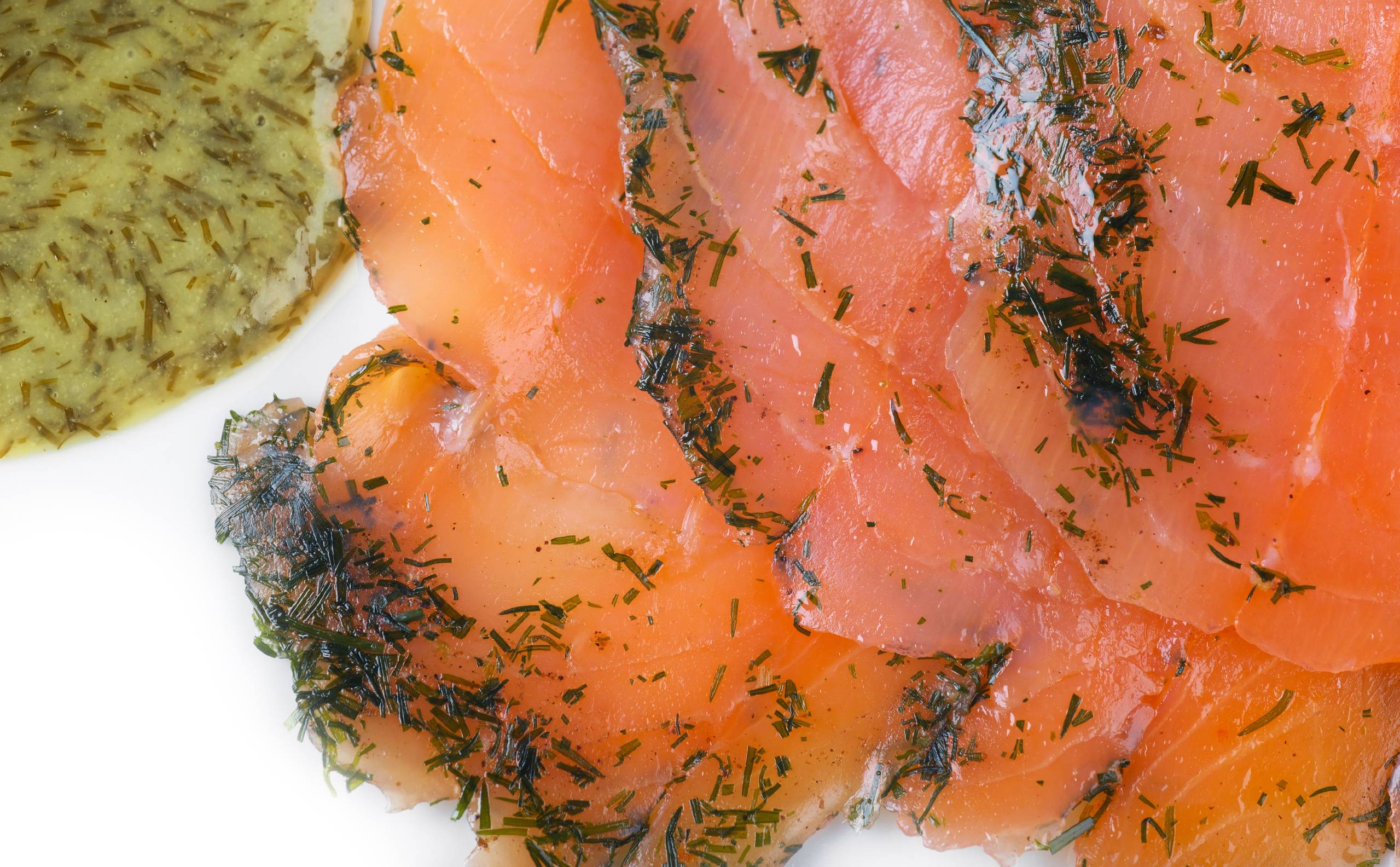
by zan@zeliciousrecipes.com | Appetizers, Fish, Sauces

This is one of the few recipes my mom brought with her from Sweden. The name actually comes from the way salmon was prepared back in the old viking days. The Salmon back then with all the spices were buried in a “grave”, for curing. It is simple to prepare. It basically takes care of itself for 3-4 days.
Ingredients:
- Two 1.5 lb. filets of salmon with skin on preferably mid-section – need to match when placed together (skin side out)
- ½ cup (organic) sugar
- ½ cup salt
- 1 tsp freshly ground black pepper (or cracked) larger chunks
- 1 tsp ground white peppercorns
- 3 cups of chopped dill with stems (to make a thick blanket on all sides)
Directions:
Mix sugar, salt and pepper. Rinse and pat dry the salmon filets. On a piece of tinfoil, thick blanket of dill the same size of the salmon, then you sprinkle liberally ⅓ of the salt/sugar mixture. Place first piece of salmon, with skin down. Then cover with the top of the salmon with ⅓ dill and sprinkle liberally with another ⅓ of the salt/sugar mixture. Place then next salmon filet, on top with skin to the outside. Place last ⅓ of dill and last ⅓ of the salt/sugar mixture on top of the skin of the 2nd piece. Cover with another piece of tinfoil, and seal the edges of the foil loosely so it has some air to breathe (since it’s not quite dead yet…still needs to be buried ;-). Place salmon in a plastic bag. Next place the bagged salmon in a shallow dish and add a heavy weight on top, you can use an iron skillet or flat stone if you have access to one. Place salmon with weight in the fridge for 4 days, turning over salmon once a day. When slicing the salmon be sure to slice against the grain in super thin slices.
Sauce:
Coming soon – I have to get some help from my mom on this, that has never written it down.














